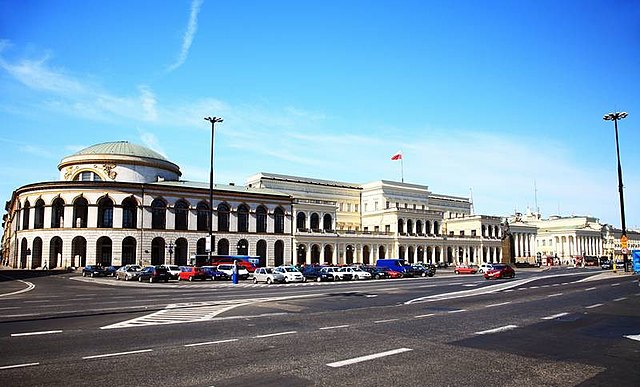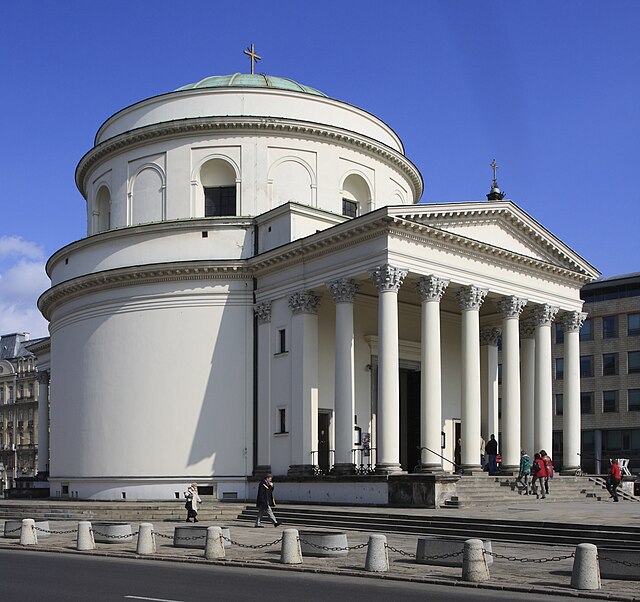Neoclassical architecture in Poland
Neoclassical architecture in Poland was centered on Warsaw under the reign of Stanisław August Poniatowski, while the modern concept of a single capital city was to some extent inapplicable in the decentralized Polish–Lithuanian Commonwealth. Classicism came to Poland in the 18th century as the result of French infiltrations into the Polish millieu. The best-known architects and artists who worked in Poland were Dominik Merlini, Jan Chrystian Kamsetzer, Szymon Bogumił Zug, Stanisław Zawadzki, Efraim Szreger, Antonio Corazzi, Jakub Kubicki, Hilary Szpilowski, Christian Piotr Aigner, Wawrzyniec Gucewicz, Bonifacy Witkowski and Danish Bertel Thorvaldsen.
St. Anne's Church, Warsaw (1786)
Roman theater on the Isle (1790-1793), a companion to the Palace on the Water
Bank Square, Warsaw (1825)
Łazienki Palace in Warsaw, 1764-1795
St. Alexander's Church, Warsaw
St. Alexander's Church is a Roman Catholic church located on Triple Cross Square in central Warsaw, Poland. It is near the south end of New World Street, the Royal Route, and Warsaw's Old Town. The church is one of Warsaw's most recognizable landmarks.
St. Alexander's Church, on Triple Cross Square, Warsaw.
Fragment of statue of dead Christ by a Roman or Florentine sculptor in left side altar
St. Alexander's Church ca. 1890–1900
South facade before 1939








